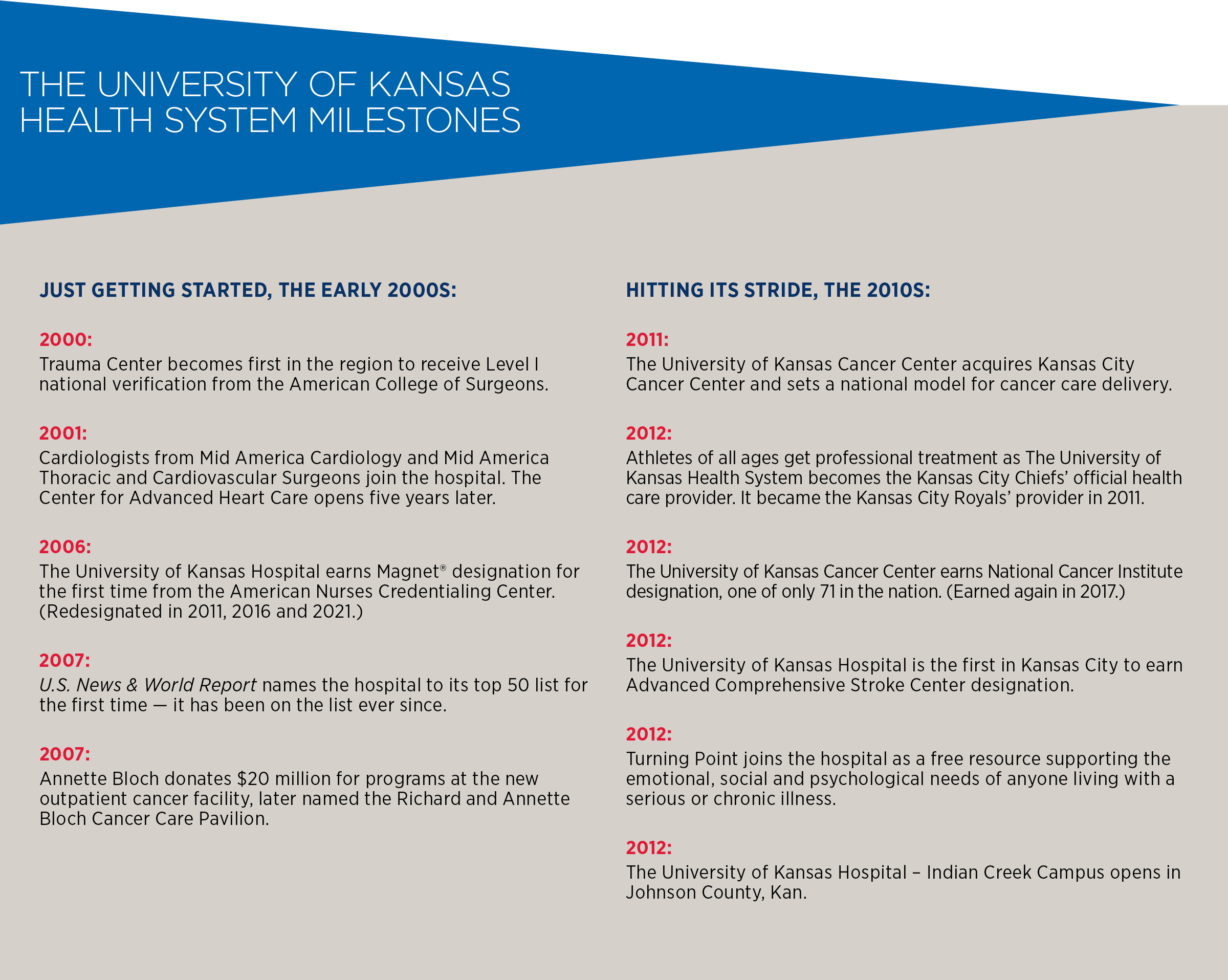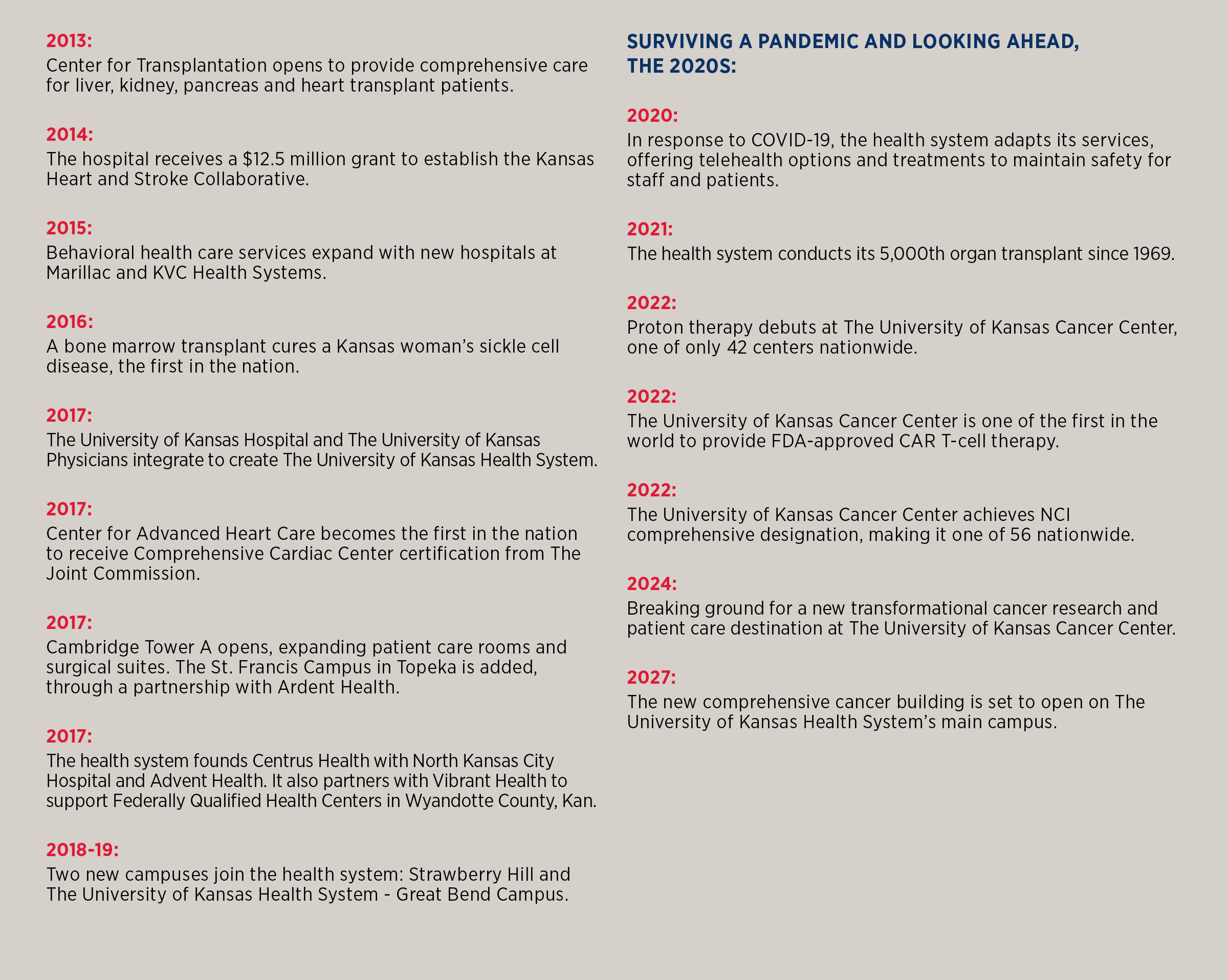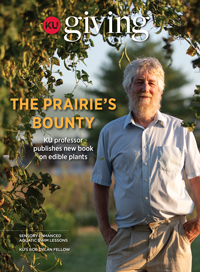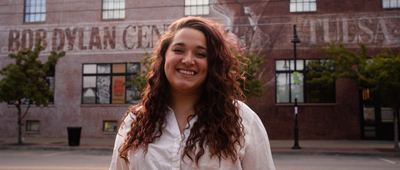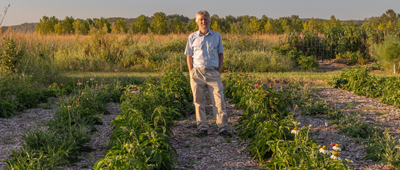KU Giving Magazine
Destination: Health Care
Lindsey Leesmann
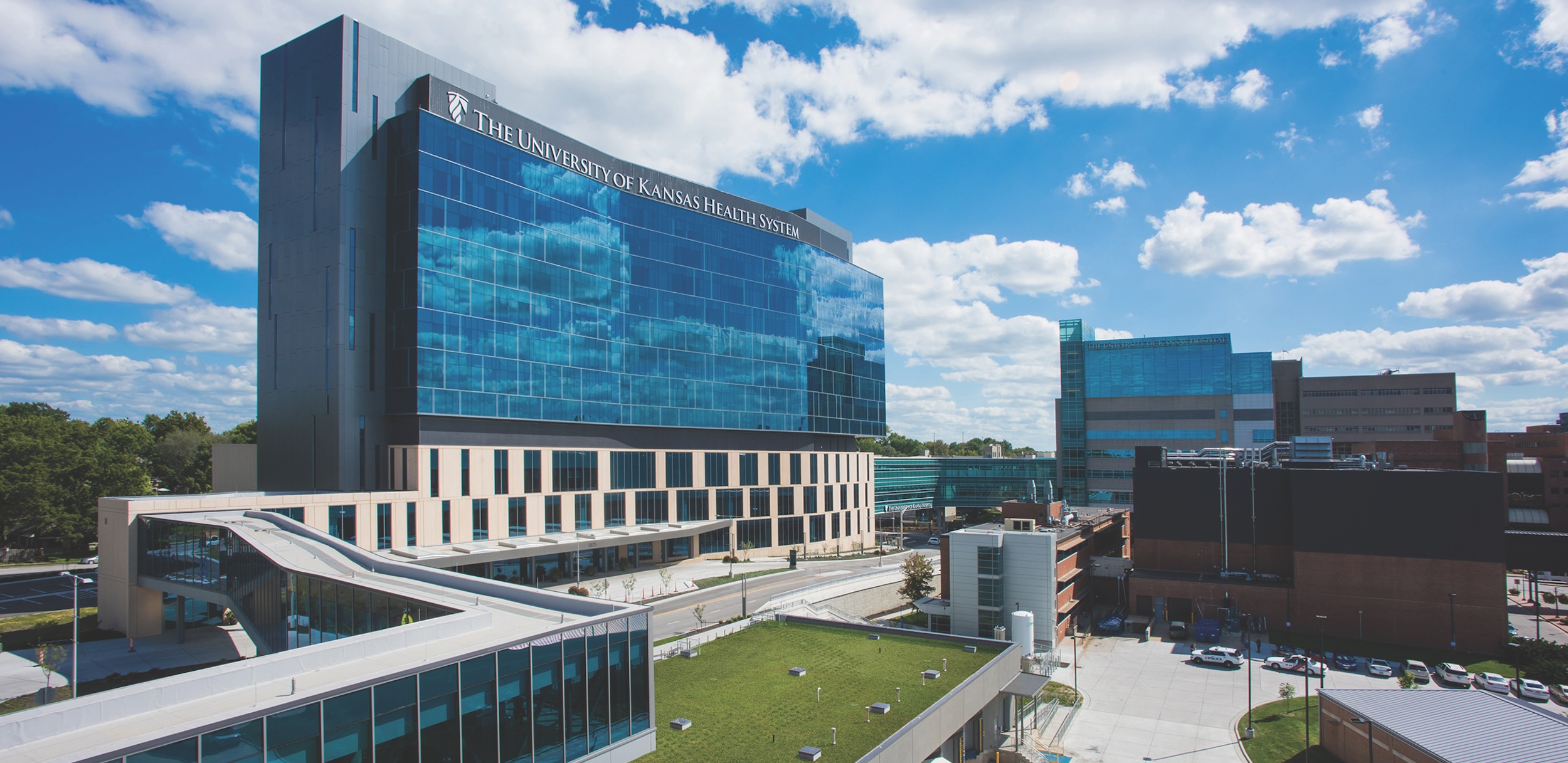
The University of Kansas Health System provides world-class, innovative health care from - and supported by - the heart of the heartland
Amanda McRae of Kansas City knew her double vision was not from pregnancy hormones when she still could not see her son’s face three days after giving birth.
Ethan Payne, a football player for McPherson College in central Kansas, had to face extensive rehabilitation after a car accident left 74% of his body covered in burns.
Alexander Goodwin from Lutterworth, England, wanted to celebrate his 10th birthday, but Ewing sarcoma was in the way.
Patrick Lanphier, who lives near Omaha, Neb., was prepared to relocate to Houston, Texas, temporarily to treat his recurrent prostate cancer.
Four unique patients. Four varying diagnoses. Four vastly different places they call home. One common denominator.
Amanda, Ethan, Patrick and Alexander all came to Kansas City, Kan. — at the heart of the Heartland — to receive care at The University of Kansas Health System, the patient care provider for the region’s only academic medical center, the University of Kansas Medical Center.
Together, the health system and KU Medical Center are putting Kansas City on the map as a health care destination for people who face complex medical conditions, and providing hope and healing for those who may have heard “there is no known treatment” elsewhere.
The gift that changed a region
The University of Kansas Health System is a global health care leader today, but it would not exist without one man’s generous gift and audacious idea in 1894. That year, surgeon and real estate entrepreneur Simeon B. Bell, M.D., approached the University of Kansas with a proposal. He would donate 500 acres of land located near the border of Kansas and Missouri and $100,000 — equivalent to almost $3.7 million today — to KU to establish a medical school and hospital. The lack of any four-year, university-level medical schools in the area meant KU’s talented premedical students had to leave home to finish their degrees, which left a care gap noticeable in not only Bell’s Rosedale, Kan., community, but the region.
Bell’s vision for his gift was simple but ambitious: To serve as “a place where the people of Kansas and areas surrounding may enjoy the best medical care available anywhere.”
And with that, academic medicine entered the Great Plains. First, with the opening of KU’s School of Medicine in what is now known as Kansas City, Kan., followed the next year by the Eleanor Taylor Bell Memorial Hospital, named for Bell’s beloved late wife.
Transforming care in transformative times
For more than 80 years, Bell Memorial Hospital was part of KU’s School of Medicine. Educating generations of doctors, nurses, pharmacists and other medical providers while caring for the members of its ever-changing community. But by the late 20th century, KU Med, as the hospital had come to be known, could no longer keep up with the demands of the patient population and educate its medical student body. Things were looking bleak, and there was even talk of shutting the hospital down.
Something had to be done to maintain Bell’s vision of health care for the region, so a transformative (and risky) decision was made: The hospital and KU’s medical school would separate. What was once a single entity, would now be two: One to educate the next generation of caregivers, one to provide patient care.
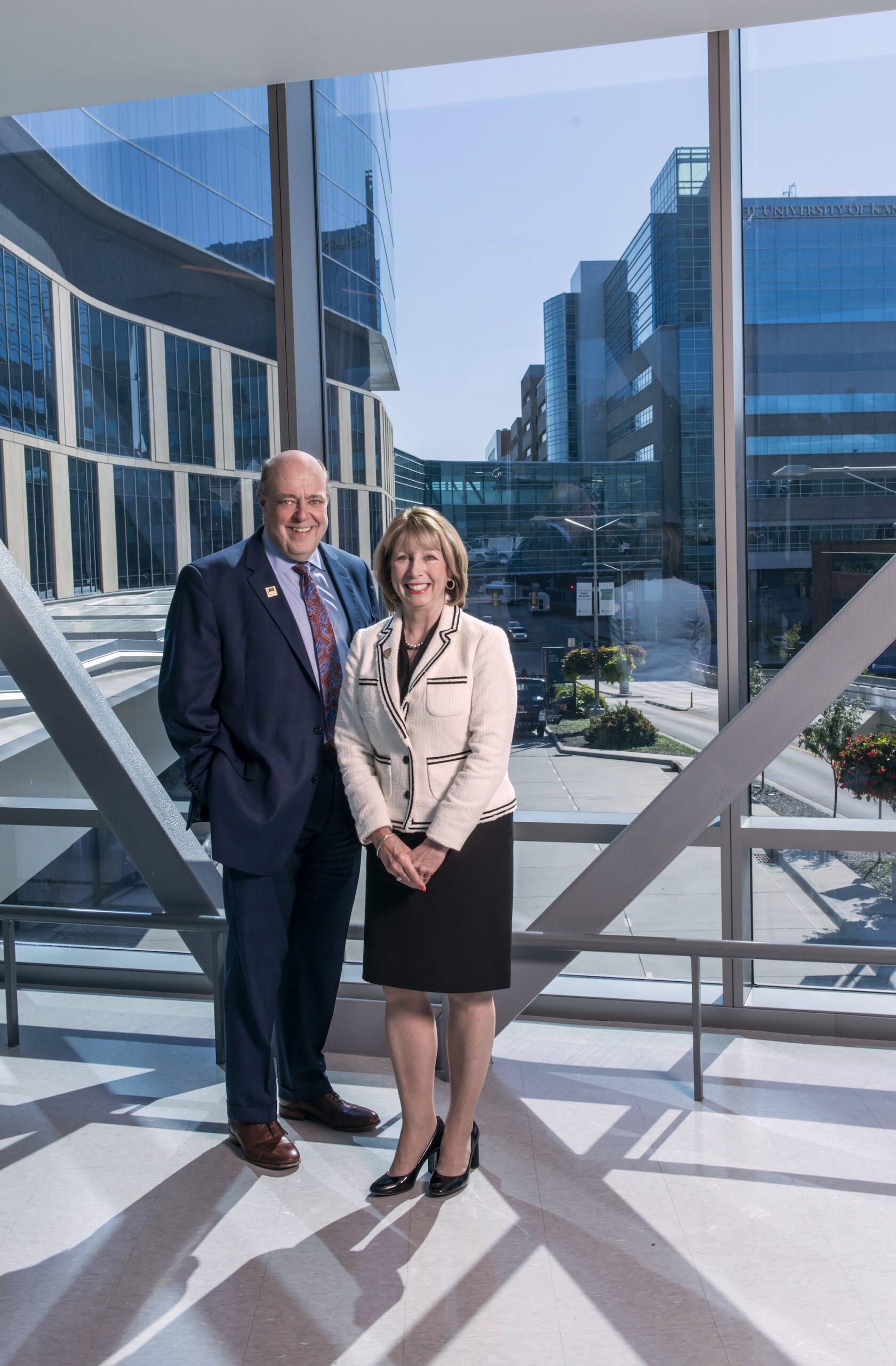
LEADERS IN HEALTH CARE: Executives Bob Page and Tammy Peterman have been instrumental in The University of Kansas Health System becoming the highly acclaimed health system it is today.
On Oct. 1, 1998, at 12:01 a.m., the hospital became an independent authority — no longer receiving any funds from the state beyond a tiny initial budget of $23.3 million — and The University of Kansas Hospital was born.
Since that day 25 years ago, the hospital — now The University of Kansas Health System — has thrived. Kansans and others across the region can access the most innovative treatments provided by nationally recognized specialists and care teams without leaving an important aspect of their healing: their community.
Reimagining the future of health care
Much like when it originally opened more than a century ago, The University of Kansas Health System is committed to serving its community: the people of Kansas, the region and beyond. “Beyond,” though, has extended farther than Bell could have imagined in his wildest dreams.
Today, the health system treats the sickest of the sick — from every county in Kansas, almost every county in Missouri, every state in the U.S. and 26 countries across the world. And that was just in fiscal year 2023.
“When we started this journey 25 years ago, we knew we needed to find a path forward, because patients didn’t want to be here,” said Tammy Peterman, MS, RN, FAAN, President of the Kansas City Division and Executive Vice President, Chief Operating Officer and Chief Nursing Officer of
The University of Kansas Health System. “I don’t think anyone then would have — could have — imagined we would be where we are today.”
And for the next 25 years?
“We’ve come so far, but there is so much more to do,” Peterman said. “We want to ensure no Kansan needs to leave home for the very best care provided by the very best care teams.”
Bob Page, the health system’s president and CEO, likes to imagine the future and think about what lies ahead. His vision is simple, but ambitious. Much like Bell’s plan when he approached KU more than 100 years ago.
“We believe the day is near where cancer is a treatable disease, not a death sentence. And where breakthroughs in brain health mean patients can live their best lives for longer,” Page said.
How?
“Starting here,” he said. “With the answers — and hope — we provide for so many today.”
Answers and hope that would not be possible without the collaboration of the medical researchers at the University of Kansas Medical Center, the dedicated care team at The University of Kansas Health System and the support of the community that this hospital has always had at the heart of everything it does.
